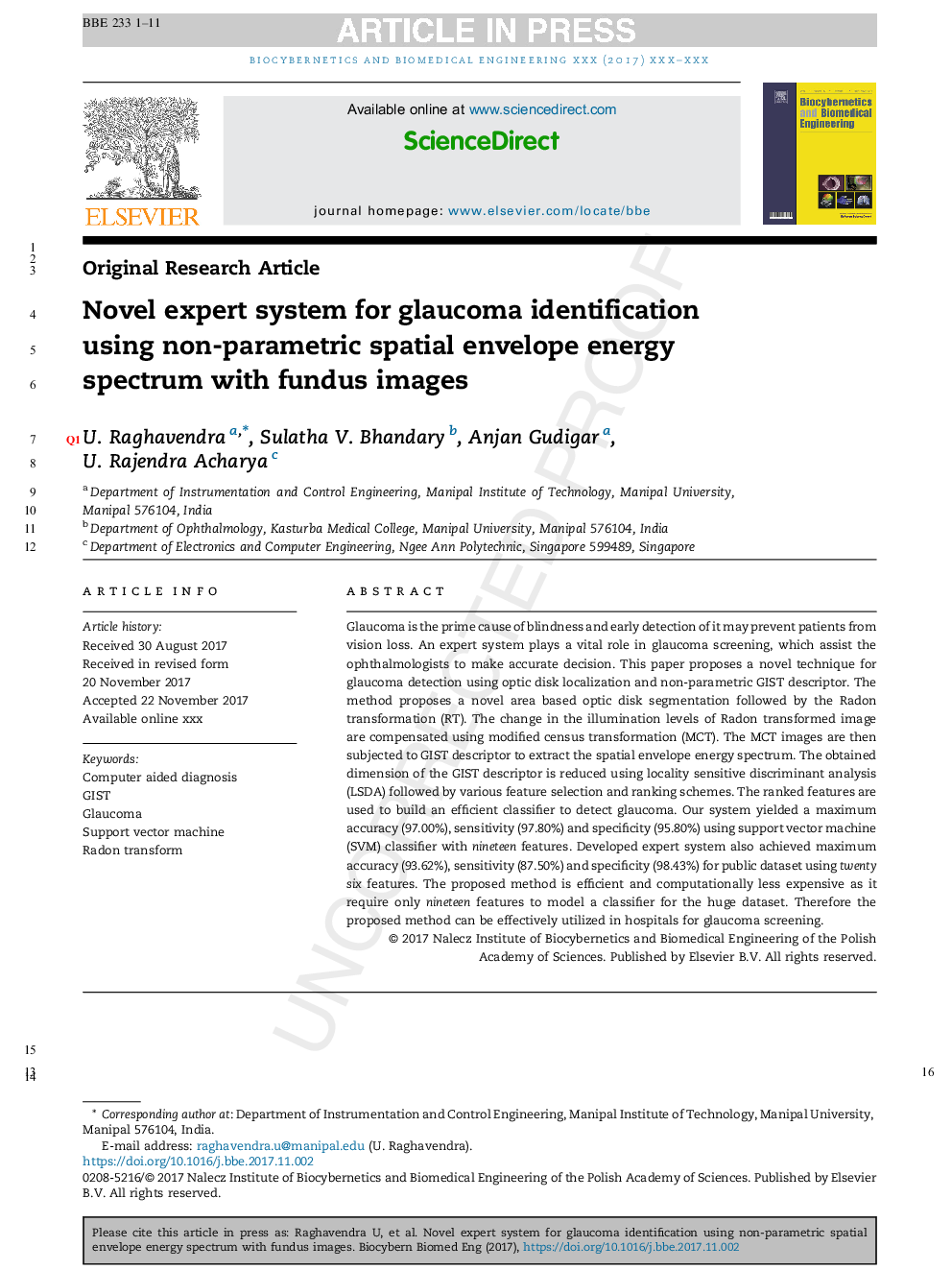ترجمه فارسی عنوان مقاله
سیستم متخصص رمان برای شناسایی گلوکوم با استفاده از طیف انرژی ناپیوستگی فضایی با تصاویر فوندوس
عنوان انگلیسی
Novel expert system for glaucoma identification using non-parametric spatial envelope energy spectrum with fundus images
| کد مقاله | سال انتشار | تعداد صفحات مقاله انگلیسی |
|---|---|---|
| 138775 | 2018 | 11 صفحه PDF |
منبع

Publisher : Elsevier - Science Direct (الزویر - ساینس دایرکت)
Journal : Biocybernetics and Biomedical Engineering, Volume 38, Issue 1, 2018, Pages 170-180

